During the World Cup 2014 at Brazil, millions of soccer fans and thousands of experts saw the renaissance of the 3-5-2, the classical continental formation of the 1970s and 1980s. Louis van Gaal, who throughout his managerial career has stood by a philosophy akin to the Dutch “Total Football” but been highly flexible in terms of formational choice (e.g., 4-3-3 at Ajax, 2-3-2-3 at FC Barcelona, 4-4-2 at AZ Alkmaar), was one of the coaches who employed 3-5-2 with his Dutch national team, that is, with players who for the most part have been educated in the traditional Dutch 4-3-3. It certainly raised some eyebrows, not least in his home country, but Van Gaal’s experiment paid off as Holland won the bronze medals.
I have already written in an earlier piece what consequences the conversion from 4-4-2/4-2-3-1 to 3-5-2 inevitably have on a team’s attacking profile. Just to repeat the main point: The creative epicenters of the 4-4-2 are the two wingers, that is, the team creates most from the peripheries, whereas the creative fulcrum in a 3-5-2 is associated more with the classical number 10 playing centrally behind two attackers. It seemed to make a lot of sense that Van Gaal made the switch with Holland since Wesley Sneijder had a good tournament (although not a dazzling one), Robin van Persie scored the goal of the tournament and of his career, and, not least, Arjen Robben was the star of the World Cup (together with Toni Kroos). However, in several matches it was also clear that Holland had some difficulties in dominating the game, in keeping ball possession, and in creating chances. It was as if the team comprised one very good attacking midfielder and two brilliant forwards and six pretty ordinary defensive oriented players. Too much depended on Robben’s speed and dribbling and on Van Persie’s moments of clinical or breathtaking finishing. But still, two things point in the direction that Van Gaal got it right: With the types of players he had at his disposal, it seemed logical to adapt to a system which basically was meant to create free roles for Robben and Van Persie, and with the players available it was an achievement in itself to reach third place.
Taking over the manager’s seat after David Moyes at Old Trafford, it couldn’t surprise anyone that Van Gaal chose to stick to his successful World Cup formation. After all, it had secured him a bronze medal, and fans and experts alike did agree that the Dutch Iron Tulip was one of the master tacticians during the World Cup. Apart from having been triumphant with the 3-5-2 formation in Brazil, Van Gaal immediately took a look at the squad he had inherited from Moyes, and his verdict was clear: it was unbalanced. What did he mean by that? First, the squad consisted of too many number 10s (Juan Mata, Shinji Kagawa, Wayne Rooney, Danny Welbeck, perhaps even Adnan Januzaj and Marouane Fellaini) and too many number 9s (Robin van Persie, Wayne Rooney, Danny Welbeck, Javier Hernandez, and James Wilson). Choosing a 4-2-3-1 would mean either playing the Rooneys and Matas out of position or putting them on the bench. Second, the other thing he meant by “unbalanced” was that the squad lacked wide players, or, as he corrected himself, “world class wingers on the same level as Cristiano Ronaldo or Angel di Maria”. It was a pretty damning verdict on players such as Nani and Ashley Young, whereas Antonio Valencia had already proven himself capable of occupying a more defensive wide position (right back) under Alex Ferguson and David Moyes. As for Januzaj, he never had any reason to belief Van Gaal’s verdict included him. So, Van Gaal realized that he had loads of creative talent centrally and not enough of it on the wings. So far so good. The conversion to 3-5-2 still makes sense. This opinion was only strengthened after Manchester United’s preseason tour to the United States where the team came out as (undefeated) winners in a highly prestigious tournament including opponents such as Inter Milan, Real Madrid, Liverpool, Manchester City, and Roma. In addition, Rooney was named the best player of the tournament. Finally, Ander Herrera, the Spanish midfielder bought from Athletic Bilbao seemed to hit the ground running, and Darren Fletcher, out for so long with what could have turned into a life-threatening bowel disease, appeared to be back to his competitive and combative best.
There are three things, though, which challenge the logic and suitability of Van Gaal’s conversion. First, if Van Gaal was right in his characterization of the squad as being “unbalanced” in terms of not enough wing talent and too much talent centrally, the change from playing with two central defenders to three basically means that you need more central defenders. Did he have that? No, he did not. In fact, after Nemanja Vidic and Rio Ferdinand left Manchester United, Van Gaal inherited a squad with only three central defenders (plus a couple of talents). Luke Shaw was brought in to replace Patrice Evra, but only very recently Van Gaal and Ed Woodward managed to secure another defender, Marcos Rojo, who may have had a very good World Cup, but is not exactly one who the fans expect to take over from Vidic or Ferdinand in terms of responsibility and level. So, does it make sense that Van Gaal converted from 4-2-3-1 to 3-5-2 at Old Trafford? In my opinion, not entirely. He may have a point in terms of getting the best out of Mata, Rooney and Van Persie, but a backline of three consisting of the likes of Chris Smalling, Phil Jones, Marcos Rojo, and Jonny Evans is not exactly frightening to attacking trios such as Neymar-Messi-Suarez, Ronaldo-Benzema-Bale, and Silva-Dzeko-Aguero.
The second reason why Van Gaal’s decision of formational change may prove unsuitable is that Manchester United’s success has often been intricately linked with flamboyant wingers such as Cristiano Ronaldo, Ryan Giggs, Andrei Kanchelski, George Best, Johnny Berry, and Billy Meredith. Attacking width is almost ingrained into the club’s DNA. Of course, what was in the past was in the past, and that cannot determine whether future success can be secured by other means. The game of soccer constantly evolves, and Van Gaal may be one of its greatest innovators and tacticians. Still, there is something very strange in seeing a Manchester United team without attacking full backs and flamboyant wingers.
Third, if Manchester United fans thought, after the successful U.S. tour, that the good times were returning to Old Trafford, and that the Iron Tulip had worked miracles instantly, they woke up to a reality that was only a prolongation of last year’s disasters at the Theatre of Dreams – a fitting name nowadays, since the gap between dream and reality has never seemed larger at Old Trafford in the last 30 years. During the reign of Sir Alex Ferguson, the dreams at Old Trafford were often converted into reality, and if it may sometimes have been a conversion that came late, in Fergie time, it nevertheless often came. Not anymore, though. Decades of creating a fortress of fear was ruined in just nine months by David Moyes, his staff, and the players, and Swansea’s 2-1 win at Old Trafford against Manchester United in this season’s first match merely showed how far Manchester United and Louis van Gaal are from the glory of the past. Even though Van Gaal converted from 3-5-2 to 4-2-3-1 at half time, things did not improve greatly in the second half. It did give the fans a glimmer of hope in regard to what I would think were their preferred formation, one with wingers and attacking width.
If there is one thing that offers hope for Manchester United’s millions of fans worldwide, it must be that Louis van Gaal is a slow starter wherever he is. He has said it himself: It is all about surviving the first three months, because this is the time it takes for the players to adapt to his “vision”. I am not sure, though, that Manchester United, in the hunt for a Premier League title or, at least, a Champions League spot, can afford a three-month period with sustained losses of points. If the club does not manage to secure the signatures of Mats Hummels, Arturo Vidal/Kevin Strootman, and Angel di Maria (or someone on the same level as these players), the future sure does not look bright at Old Trafford, despite the tactical genius of Louis van Gaal.
200+ Channels With Sports & News
- Starting price: $33/mo. for fubo Latino Package
- Watch Premier League, World Cup, Euro 2024 & more
Live & On Demand TV Streaming
- Price: $35/mo. for Sling Blue
- Watch Premier League, World Cup & MLS
Many Sports & ESPN Originals
- Price: $9.99/mo. (or get ESPN+, Hulu & Disney+ for $13.99/mo.)
- Features Bundesliga, LaLiga, Championship, & more
2,000+ soccer games per year
- Price: $4.99/mo
- Features Champions League, Serie A, Europa League & NWSL
175 Premier League Games & PL TV
- Starting price: $4.99/mo. for Peacock Premium
- Watch 175 exclusive EPL games per season
110+ channels, live & on-demand
- Price: $59.95/mo. for Plus Package
- Includes FOX, FS1, ESPN, TUDN & more

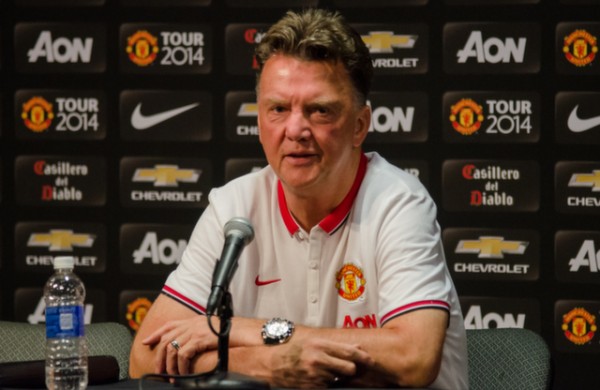













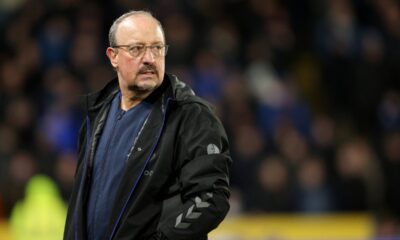

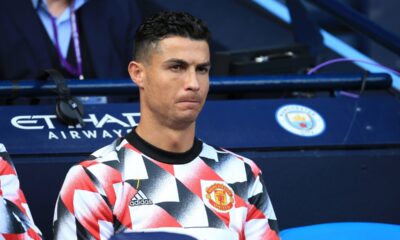

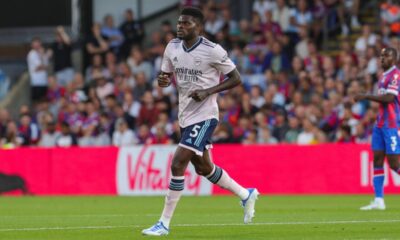

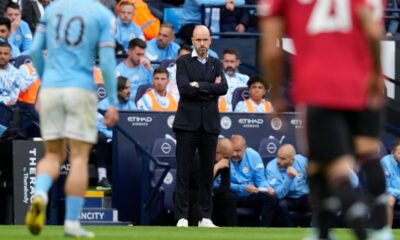

enzama kizito
September 9, 2014 at 6:36 am
it shouldnt be judged too early,lets give him some time
Anonymous
August 25, 2014 at 7:42 am
I agree Smalling Jones and Rojo are great potentials that will be great but I don’t think that will be enough against teams like Chelsea and Manchester City. A back four will be more compact and allow midfield greater freedom and hopefully distribute the ball to our attacking players. I reckon we need width, dribbling, pace in our attacks. A free flowing team which isn’t happening anymore. I would implement the 4-4-2 formation with a diamond where Mata can be deployed behind Rooney and Van Persie although I would like Rooney to drop back and help out Mata and Herrera in midfield.
I like the idea that Van Gaal wants to pack the midfield when not in position and make the pitch seem small when the opponents have the ball. Which is still very much achievable with 4-4-2 we just need the right players. I believe if rumours are true then the team should line up like this:
————-De Gea————–
–Smalling—Jones—Rojo—Shaw–
————-Herrera————–
—Di Maria————Januzaj—–
————–Mata—————
——Van Persie—-Rooney——–
ManUtdFan
August 22, 2014 at 11:46 am
It makes sense to adopt a formation that will accommodate your best players: Rooney, van Persie and Mata are undoubtedly the cream of the United crop, so why wouldn’t van Gaal build a team around them?
That United lack quality center halves is not a sufficient deterrent against this idea. After a summer in which so many defensive stalwarts have departed, van Gaal was bound to try and sign more defenders anyway. This would have been the case whether he had a preference for three or two starting center halves.
As for the appeal that traditional wingers would have for the United faithful, the fact is that the club has no good candidate for either wing. It would be foolhardy to insist on playing with attacking width just for traditions’ sake. And who’s to say that the fans wouldn’t warm up to wingbacks, if van Gaal manages to coax quality performances from whomever he picks in those two positions, further down the road? Van Gaal might just start a brand new tradition at Old Trafford.